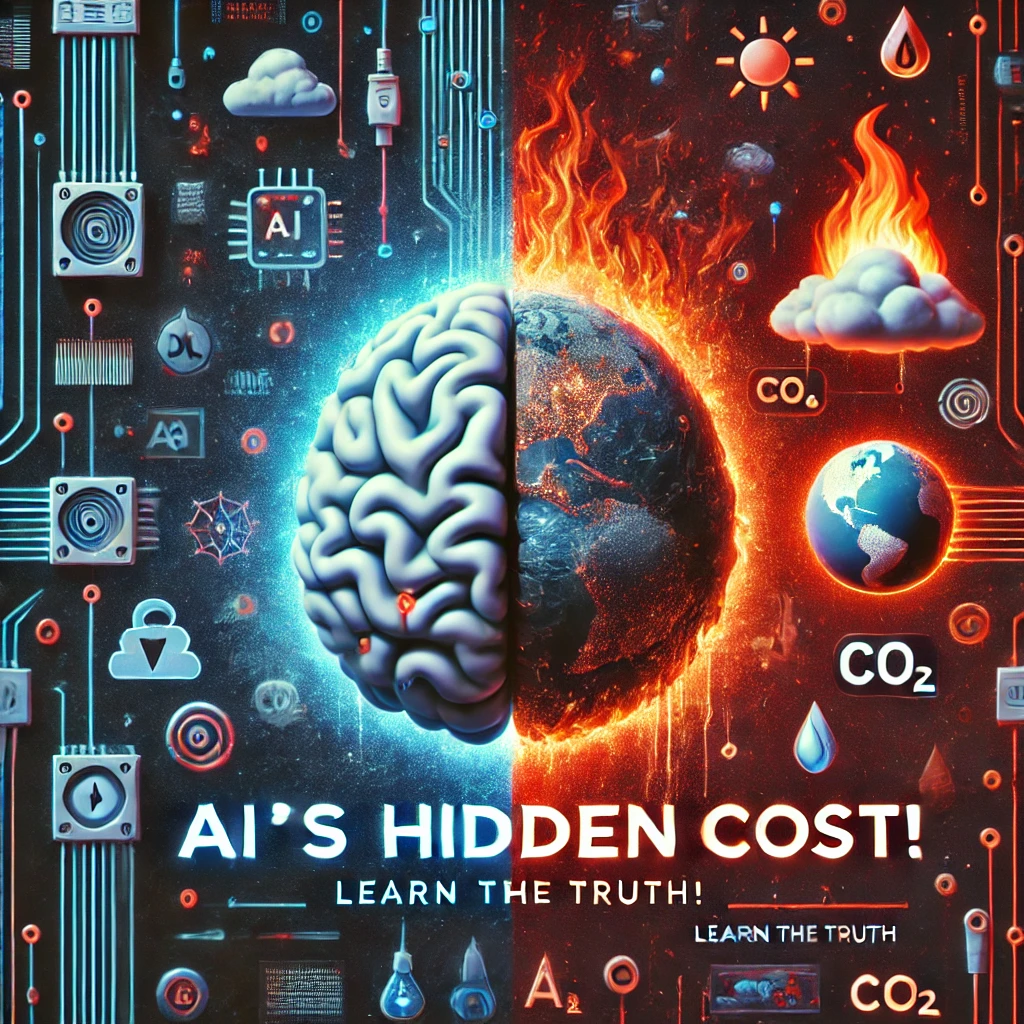Table of Contents
ToggleArtificial Intelligence (AI) is at the forefront of technological innovation, driving advancements in various fields. However, this rapid growth comes with a significant environmental cost. Generative AI, which powers tools that create images, text, and even voice, consumes about 30 times more energy than traditional search engines. This alarming fact has experts like Sasha Luccioni raising the alarm about the environmental impact of this booming technology.
Sasha Luccioni, a Canadian computer scientist recognized as one of Time magazine’s 100 most influential people in AI in 2024, has been researching the carbon footprint of AI programs for years. She is particularly concerned about the energy-intensive nature of generative AI models like ChatGPT and Midjourney. “I find it particularly disappointing that generative AI is used to search the Internet,” she says. Unlike traditional search engines that simply retrieve existing information, generative AI models create new content, which requires far more computational power and energy.
Why Generative AI Consumes So Much Energy
The energy consumption of AI is mainly driven by two factors: the training of large language models and the ongoing processing required to generate responses to user queries. Training an AI model involves running calculations on massive datasets for days or even weeks, which requires powerful servers consuming a significant amount of electricity. Even after the training phase, the process of generating responses to user inputs is energy-intensive, as it involves running complex algorithms to produce new information.
According to the International Energy Agency, the combined electricity consumption of AI and cryptocurrency sectors reached nearly 460 terawatt hours in 2022, making up about 2% of the global electricity production. This energy demand is not only enormous but also growing, as more companies and individuals use AI in various applications.
Tools to Measure and Reduce AI’s Carbon Footprint
To address this environmental challenge, Luccioni has been actively involved in developing tools to measure and reduce the carbon footprint of AI. In 2020, she helped create “CodeCarbon,” a tool that allows developers to quantify the carbon emissions of their code. Since its launch, “CodeCarbon” has been downloaded over a million times, highlighting the growing awareness of AI’s environmental impact among developers and companies.

Currently, Luccioni is working as the head of climate strategy at Hugging Face, a platform for sharing open-access AI models. She is developing a certification system for algorithms that would help users and developers understand the energy efficiency of different AI models. The idea is to give each model a grade, similar to how appliances are rated for energy efficiency. For example, a highly efficient model might receive an “A+,” while a less efficient one might get a “D.” This system aims to encourage more sustainable choices in the use of AI technologies.
The Challenge of Transparency from Tech Giants
While tools like “CodeCarbon” and efforts to grade AI models for energy efficiency are steps in the right direction, there is still a need for greater transparency from major tech companies. Firms like Google and Microsoft have made public commitments to achieve carbon neutrality by the end of the decade. However, the reality is that their AI-related greenhouse gas emissions have increased significantly—Google’s emissions have risen by 48% since 2019, and Microsoft’s by 29% since 2020.
Luccioni calls for more openness from these companies about their energy usage and the environmental impact of their AI models. She argues that greater transparency is essential for both the public and governments to make informed decisions about AI regulation. Currently, governments are “flying blindly,” as Luccioni puts it, lacking the necessary information to understand what is in the data sets or how the algorithms are trained.
Impact on Everyday Life and the Push for ‘Energy Sobriety’
Luccioni’s research also emphasizes the real-world impact of generative AI’s energy consumption on everyday life. In her latest study, she found that producing a high-definition image using AI can use as much energy as fully recharging a cell phone battery. This is a concerning figure, especially as AI becomes more integrated into our daily lives through conversational bots, connected devices, and online searches.
Given the rising use of AI, Luccioni advocates for “energy sobriety.” This concept involves using AI thoughtfully and efficiently rather than deploying it indiscriminately. It’s not about opposing AI outright but about choosing the right tools and using them wisely. For instance, if a simple task can be completed with a traditional search engine, there’s no need to use a more energy-intensive AI tool.
The Path Forward
The rapid advancement of AI presents a complex challenge. On one hand, AI offers incredible benefits and capabilities, driving innovation in various sectors. On the other hand, its growing energy consumption poses a serious threat to the environment. The key to addressing this issue lies in balancing AI’s development with sustainable practices.
Efforts like Luccioni’s are crucial in driving awareness and action towards more sustainable AI use. By developing tools to measure and reduce AI’s carbon footprint and advocating for transparency and responsible usage, experts can help guide both the tech industry and users toward a future where AI can be used without accelerating the climate crisis.
The conversation about AI’s environmental impact is just beginning, but it is an essential part of the broader dialogue on how to integrate technology into a sustainable future.

[…] this article, we’ll explore the essential AI skills you need to develop, the types of jobs they will lead to, and how to choose the right skills to […]
[…] Issues One of the main challenges facing the military cybersecurity sector is the integration of advanced solutions with existing IT infrastructures. Issues such as technical malfunctions and cross-platform […]
[…] move comes amid a growing concern over the spread of deepfakes and AI-generated scams. Recent reports indicate a 245% increase in […]